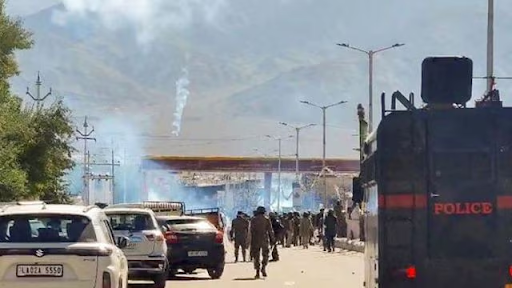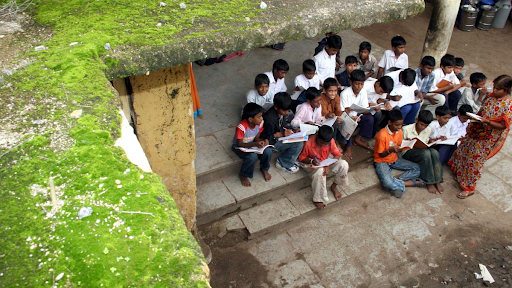Description

Copyright infringement not intended
Picture Courtesy: https://www.business-standard.com/india-news/responsibility-of-all-to-make-country-narcotics-drug-free-amit-shah-124082500231_1.html
Context:
The Union Home Minister highlighted the objective of zero tolerance for narcotics and directed extensive investigations to eliminate criminal networks.
Details
The Union Home Minister inaugurated the new zonal office of the Narcotics Control Bureau (NCB) in Raipur, Chhattisgarh.
Narcotics Control Bureau (NCB)
●It was established in 1986, to ensure the implementation of the Narcotic Drugs and Psychotropic Substances Act of 1985.
●It functions under the Ministry of Home Affairs.
●It coordinates with state governments and other central departments, carrying out India's international commitments on drug trafficking, and aiding international and foreign drug law enforcement authorities.
●Officers are drawn from the Indian Revenue Service, the Indian Police Service, and paramilitary forces, as well as directly recruited personnel.
|
Key highlights of the Speech
- He emphasized a zero-tolerance policy towards narcotics. His statement reflects a strong commitment from the government to eradicate drug abuse and trafficking from the country.
- He highlighted a target to establish NCB offices in every state. This expansion aims to strengthen the country’s ability to tackle drug-related issues more effectively at a regional level.
- He underlined a significant shift from natural drugs like marijuana to synthetic drugs. Synthetic drugs are often more harmful and expensive, posing new challenges for enforcement agencies.
- He pointed out concerning statistics related to drug use in Chhattisgarh. The state has higher usage rates of sedatives and marijuana compared to national averages, signalling a serious problem in the region.
- He called for a comprehensive, scientific approach to investigations, urging authorities to dismantle entire drug networks rather than focusing on individual incidents.
Drug Menace in India
- The term "drug menace" refers to the widespread and serious issues associated with drug abuse and addiction.
- According to the National Comprehensive Survey conducted by the Ministry of Social Justice and Empowerment, there are more than 60 million drug users in the country.
- This not only destroys individual lives but also has far-reaching consequences for families, communities, and the nation as a whole.
Impact of Drug Addiction
- Health Consequences: Drug addiction leads to severe physical and mental health problems. It can cause chronic diseases, mental health disorders, and even death.
- Social Issues: Addiction often leads to antisocial behaviour, including crime, violence, and theft. The breakdown of family structures and social networks is common, as addiction can lead to domestic abuse, neglect, and strained relationships.
- Economic Effects: Drug addiction leads to loss of productivity and increased unemployment. The black market for drugs generates unaccounted money, which can be used for criminal activities, including terrorism.
- National Security: Drug trafficking is linked to national security threats. The smuggling of drugs can fund organized crime and insurgency, destabilizing regions and challenging law enforcement efforts.

Key Concern
- Geographical Location:
-
- India’s location between two major opium-producing regions—the Golden Triangle (Thailand, Myanmar, Laos) and the Golden Crescent (Pakistan, Afghanistan, Iran)—makes it a significant transit route for drug trafficking.
- Social Influences:
-
- Peer pressure and family environment play a crucial role in drug abuse.
- In states like Punjab, Assam, and Delhi, there is a high use of drugs among youth.
- Socioeconomic factors such as unemployment and economic hardship also contribute to drug addiction.
- Economic Factors:
-
- Unemployment and economic instability create environments where drug use becomes more appealing.
- Economic hardship, coupled with the availability of cheap or easily accessible drugs, exacerbates the problem.

Steps taken by Government
- Legislative Measures:
-
- The Indian government has implemented several laws, including the Narcotic Drugs and Psychotropic Substances (NDPS) Act of 1985 and the Prevention of Illicit Traffic in Narcotic Drugs and Psychotropic Substances (PITNDPS) Act of 1988, to combat drug trafficking and abuse.
- National and International Efforts:
-
- Initiatives like the National Action Plan for Drug Demand Reduction (NAPDDR) and the ‘Nasha Mukt Bharat’ (Drug-Free India) campaign aim to reduce drug demand and rehabilitate addicts.
- India collaborates with international organizations such as BRICS and SAARC to combat transnational drug trafficking.
- India is a signatory of the following International treaties and conventions;
- United Nations (UN) Convention on Narcotic Drugs (1961).
- UN Convention on Psychotropic Substances (1971).
- UN Convention against Illicit Traffic in Narcotic Drugs and Psychotropic Substances (1988).
- UN Convention against Transnational Organized Crime (UNTOC) 2000.
- Technological and Strategic Measures:
- The government has launched the SIMS (Seizure Information Management System) Portal to digitize drug seizure data and enhance coordination among agencies.
- Advanced techniques, including drones and satellite surveillance, are used to monitor and control drug trafficking.
Challenges
●Despite the efforts, challenges remain, including the rise of new psychoactive substances, the lack of specialized infrastructure, and the stigma associated with drug addiction.
●Rural areas often lack adequate resources for education and treatment, and the drug trade's integration with digital platforms like the dark web complicates enforcement.
|
Way Forward
- Strengthening Enforcement:
-
- Enhance the enforcement of existing drug laws with better funding, training, and technology.
- Improve intelligence-sharing and coordination among national and international agencies.
- Improving Treatment:
-
- Increase access to affordable treatment and rehabilitation centres.
- Expand public awareness campaigns about the risks of drug abuse and the importance of seeking help.
- Border Security:
-
- Strengthen border security and use advanced technologies to disrupt drug supply chains.
- Increase international collaboration, particularly with neighbouring countries involved in drug production.
- Education and Public Awareness:
-
- Integrate drug education into school curriculums.
- Address the stigma associated with addiction and promotes understanding that drug addicts are victims needing support and treatment.
- Innovative Solutions:
-
- Utilize big data, analytics, and artificial intelligence to track drug trafficking trends and enhance detection.
- Leverage drones and satellite technology for monitoring drug cultivation areas and improve community reporting mechanisms.
Conclusion
Addressing the drug menace requires a comprehensive approach, including stronger law enforcement, effective prevention and treatment programs, and community-based interventions to reduce both supply and demand for illegal drugs.
Source:
Business Standard
Wikipedia
Down To Earth
Council On Sustainable Development
India.Gov
|
PRACTICE QUESTION
Q. How does the drug problem affect the social and economic fabric of Indian communities, and what are the potential consequences of drug addiction for public health, employment, and family structures?
|













